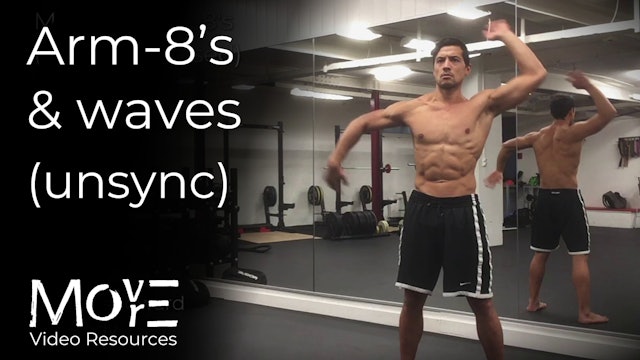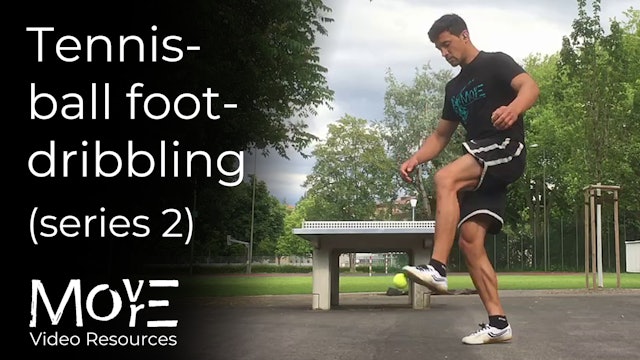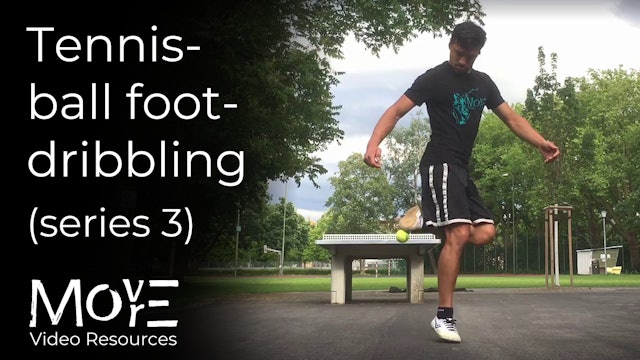Timing, rhythm, and coordination
Movement tasks which both request & develop subtle & interconnected attributes of rhythm, timing, and coordination to achieve successfully. Whether just the body moving in/through space or in connection with an object, the effective rhythm/s must firstly be noticed identified, and internalised. The ability to then exercise movement at the right moments in accordance with these rhythms then requires accurate & precise timing. In the specific movement contexts, this is then expressed in coordinative ability - the potential to organisee different body parts to work together smoothly, efficiently, and in harmonic synergy.
-
Arm Coordinations 3: Integrating figure-8's & waves (sync & unsync)
THE WHAT:
Fundamental arm coordinations to be practiced until proficient. They represent patterns (8's, waves... circles, spirals, arcs...) which are found in all movement, although in themselves are nothing more than isolated patterns. By developing an embodied understanding of these patterns yo... -
Arm Coordinations 1: Synchronised patterns (8's & waves)
THE WHAT:
Fundamental arm coordinations to be practiced until proficient. They represent patterns (8's, waves... circles, spirals, arcs...) which are found in all movement, although in themselves are nothing more than isolated patterns. By developing an embodied understanding of these patterns yo... -
Arm Coordinations 2: UN-synchronised (UNsync) patterns (8's & waves)
THE WHAT:
Fundamental arm coordinations to be practiced until proficient. They represent patterns (8's, waves... circles, spirals, arcs...) which are found in all movement, although in themselves are nothing more than isolated patterns. By developing an embodied understanding of these patterns yo... -
5 Basic skipping patterns 1 (no rope)
THE WHAT:
Frames of practice to developing an understanding of 5 different fundamental skipping patterns and the physiological qualities which their practice can build. Further to the patterns themselves, practice lies in modulating tension, developing elasticity and a sensation of "lightness"" w... -
Basic skipping patterns 1 (with a rope)
THE WHAT:
Frames of practice to developing an understanding of some fundamental skipping patterns and the physiological qualities which their practice has the potential to bring. Further to the patterns themselves, practice lies in modulating tension, developing elasticity and a sensation of "lig... -
Rope skipping 2: moving in space
THE WHAT:
5 progressive contexts for consolidating movement through space and developing dexterity with the skipping rope. They include linear (forward/back, left/right) & circular patterns, as well as changing of stance to a staggered position for better emulation of fighting/athletic contexts.
... -
Basic rope-skipping 3: Additional patterns
THE WHAT:
4 additional patterns which include variations with the arms and skipping in reverse. Regardless, the basic 'unilateral weight-shift' remains the same.Resource contents:
0:05 - Double-side "whips"
MILESTONE: 60" unbroken skipping, increasing frequency of whips to 2 whips (1 each side)... -
Close-range Ball-dribbling
THE WHAT:
A fundamental context for exploring timing, rhythm, & hand-eye coordination as well as power-management (how hard to hit the ball), object manipulation and focus. Do not, however, expect that practicing this task alone will develop those aforementioned qualities in any significant or we... -
2x ball 2x hand dribbling
THE WHAT:
A context for developing timing, rhythm, & coordination with hands as well as judgement & power-management (bouncing ball).MILESTONES:
- 30" / 1min / 2mins unbroken bouncing in squat
- 30" / 1min / 2mins unbroken bouncing with 'level changing'
- 30" / 1min / 2mins unbroken bouncing mo... -
Tennis ball foot dribbling 1
THE WHAT & HOW:
Using a tennis ball to develop "soft" qualities such as rhythm, timing, & coordination of the feet. Although foot-eye coordination oriented, full-body coordination is also developed as structure & positioning are key to successful & rhythmical striking of the ball. Be mindful of t... -
Tennis ball foot dribbling 2
THE WHAT:
Using a tennis ball to develop rhythm, timing, & coordination of the feet. Although foot-oriented, full-body coordination is also affected as structure & positioning are key to successful & rhythmical striking of the ball. Be mindful of the tendency to 'block' the upper-body (holding te... -
Tennis-ball foot-dribbling 3
THE WHAT:
Using a tennis ball to develop rhythm, timing, & coordination of the feet. Although foot-oriented, full-body coordination is also affected as structure & positioning are key to successful & rhythmical striking of the ball. Be mindful of the tendency to 'block' the upper-body (holding te... -
Stick 'circle of the hand'
THE WHAT:
A charming object-manipulation context with side-effects of wrist pre-/rehabilitation through the ranges of pronation & supination, with an elastic quality.MILESTONES:
Work toward performing 100x ‘back AND forth’ (i.e. 'there & back' = 1x) total on EACH hand WITHOUT dropping the stick...















